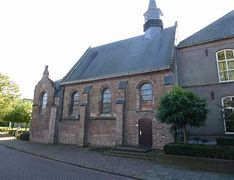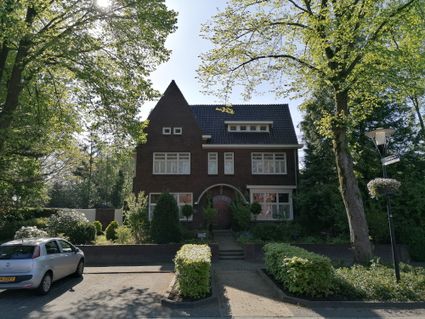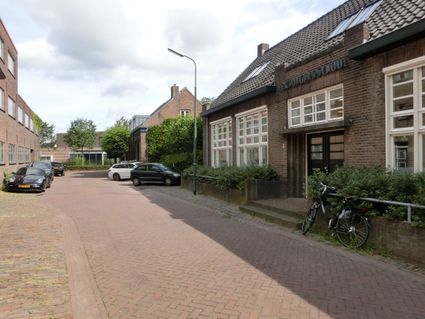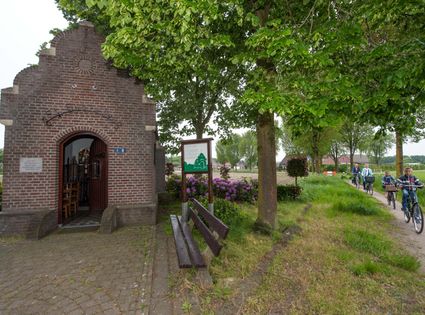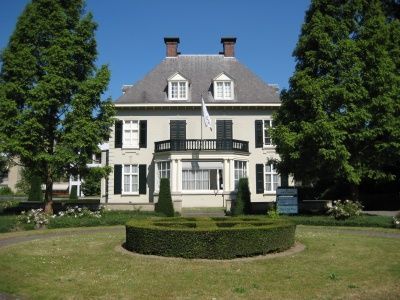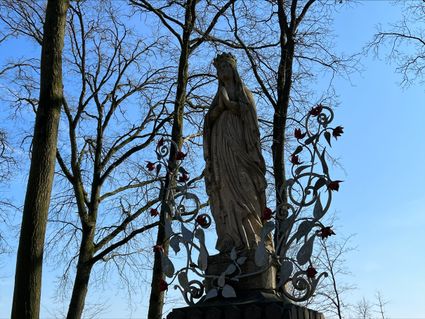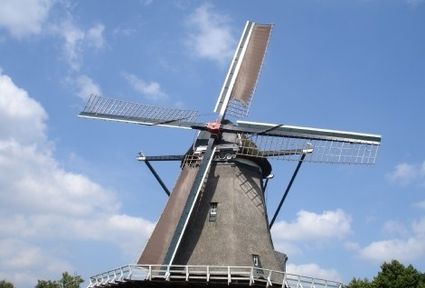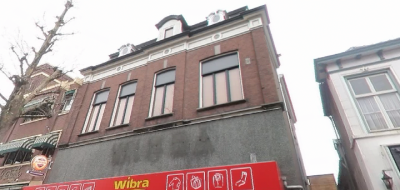Mariakapel
The chapel of Our Lady in 't Zand in Aarle-Rixtel is a fine and well-preserved example of a Brabant chapel. The main space dates from around 1500 and was extended in 1597 with a narrower and lower, three-sided choir. There are documents from which it can be seen that pilgrims went to Our Lady in 't Zand as early as 1480. Pilgrims worshipped there a pipe-work statue of Our Lady that is said to have demonstrated its miraculous power several times.
After 1648 the chapel passed to the Protestants, later it was used as a town hall, until it regained its former function in 1853. In 1957, however, procession and pilgrimage were abruptly terminated by the then parish priest who no longer considered such devotion appropriate.
In 1988, worship of the statue and pilgrimage were restored on a smaller scale.
The statu…
The chapel of Our Lady in 't Zand in Aarle-Rixtel is a fine and well-preserved example of a Brabant chapel. The main space dates from around 1500 and was extended in 1597 with a narrower and lower, three-sided choir. There are documents from which it can be seen that pilgrims went to Our Lady in 't Zand as early as 1480. Pilgrims worshipped there a pipe-work statue of Our Lady that is said to have demonstrated its miraculous power several times.
After 1648 the chapel passed to the Protestants, later it was used as a town hall, until it regained its former function in 1853. In 1957, however, procession and pilgrimage were abruptly terminated by the then parish priest who no longer considered such devotion appropriate.
In 1988, worship of the statue and pilgrimage were restored on a smaller scale.
The statue of Mary worshipped here concerns a statue of a seated Mary with the child Jesus on her right arm. It is said to have been manufactured in Arendonk (B) in the pottery of the family of Jan van Eyck. From the 14th century, such figurines were manufactured in large numbers. They served as 'souvenirs' for pilgrims. From which pilgrimage place the figurine could have been taken to Rixtel is unknown.
Bishop J. Zwijsen of Den Bosch placed the statue on a throne when the chapel was rededicated in 1856. In 1906, it was placed in a glass case on a new oak throne in the middle of the chapel. In 1917, the statue was restored by C.F.X. Smits and polychromed again.
In 1951, the goldsmiths Jan Eloy and Leo Brom from Utrecht made a large new silver shrine. On Pentecost 1956, the then Bishop Mutsaers crowned the statue of Mary, on account of its 100-year return, with a golden crown of pearls and precious stones. The following year, the baby Jesus was adorned with a golden crown. Both crowns came from Brom's workshop in Utrecht. Much later, the statue was vandalised by criminals in order to obtain the jewellery. The current figurine is a replica of the original.
In the chapel is a copy of a triptych, depicting a Madonna and Child. The original has been given on permanent loan to the Museum of Religious Art in Uden. The maker of this triptych is Jacob Cornelisz van Oostsanen, an East Zaan and later Amsterdam art painter who lived from 1470 to 1533. (source: eustachiusparish.nl)
